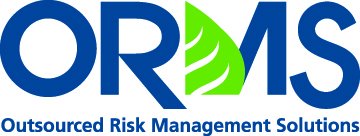A Higher Standard: Understanding the SBA’s Environmental Due Diligence Requirements
EPA Takes Action on PFAS. Here’s What Lenders Need to Know
July 10, 2024Recognition, Reflection, and Renewal
January 30, 2025A Higher Standard: Understanding the SBA’s Environmental Due Diligence Requirements
Small businesses are the lifeblood of our economy.
The U.S. Small Business Administration (SBA) was created to help small businesses through an array of loan guarantee and financial assistance vehicles, including the 7a, Express, Microloan, and CDC/504 programs. These programs offer lenders flexible, low-risk options to support small and growing businesses right in their own communities.
As versatile as these loan programs are, it’s important to keep in mind that the SBA’s environmental due diligence requirements are more rigorous than those demanded of standard lenders. The SBA’s latest Standard Operating Procedure (SOP 50 10 7.1, effective 11/15/23) is the best place to start when it comes to understanding environmental due diligence procedures for loans secured by commercial real estate.
While some of the SBA’s requirements may seem onerous, they are generally well-founded and the SOP serves as a strong foundation for any conventional commercial lending program. Here are some key differences between the SBA’s environmental due diligence requirements (as outlined in the latest SOP), and those required for standard commercial loans:
- Reliance Letters: The SBA mandates the use of specific reliance letters for Phase I and Phase II environmental site assessments (ESAs), as well as for transaction screens. Although reliance letters are a common requirement for all types of lenders, the SBA goes a step further by requiring the firm conducting the assessment to submit the data in a specific format (i.e., ASTM E1527-21) and on an approved SBA form template.
- Environmental Questionnaires: For loans up to $250,000, the SBA requires the borrower to complete an environmental questionnaire. The form must be signed by the current owner or operator of the property. If the owner refuses to sign, the SBA will require a more detailed transaction screen.
- Records Search with Risk Assessment (RSRA): For loans exceeding $250,000, the SBA requires completion of an RSRA in addition to the environmental questionnaire. This assessment involves a thorough search of historical records and government databases to identify any potential contamination risks. This level of scrutiny is more detailed compared to the typical due diligence performed by non-SBA lenders.
- Phase I and Phase II ESAs: If initial assessments (like the RSRA) reveal potential environmental contamination, the SBA requires that a Phase I ESA be completed. If the Phase I uncovers any recognized environmental conditions (RECs), then a Phase II will also be required. This tiered approach ensures a thorough investigation of existing and potential environmental hazards, which may not always be required for conventional business loans.
- Special-Use Facilities: In addition to the above general due diligence requirements, the SBA has carved out specific requirements for special-use properties like child-occupied facilities, dry cleaners, and gas stations. For example, child-occupied facilities (such as daycare centers) constructed before 1978 must undergo a Lead Risk Assessment (LRA), and all water sources must be tested for lead. Another example is that dry cleaning facilities must undergo a Phase II ESA regardless of whether a REC has been identified. These requirements often exceed those imposed by state regulations.
- Contamination and Remediation Plans: If contamination is confirmed, the SBA requires detailed remediation plans, including past and planned remediation activities, methodologies, costs, and potential impacts on collateral value. The SBA needs assurance that risks are sufficiently mitigated before proceeding with the loan.
- Phase I ESA Requirements for High-Risk Properties: Properties identified on the NAICS Codes List of Environmentally Sensitive Industries (e.g., certain manufacturing sites) always require a Phase I ESA, regardless of the loan amount. This is a stricter standard than those generally applied by conventional lenders.
These enhanced due diligence requirements reflect the SBA’s increased emphasis on minimizing environmental risks and protecting both the borrower and the lender from potential liabilities.
Because the SBA’s environmental requirements are generally stricter than those of many state regulatory agencies, the latest SOP serves as an excellent risk management roadmap for lenders of all stripes, whether or not you intend to make any SBA-guaranteed loans. As professional risk management consultants, we recommend all commercial lenders follow the SBA’s environmental due diligence guidance to reduce risk and protect your institution from potential liability and loss of collateral.
If you are already making SBA loans, we strongly recommend taking the time to review, understand, and consult the full SOP 50 10 7.1 to make sure all new and existing environmental due diligence requirements are incorporated into your projects. We also recommend consulting with an experienced outside risk management firm for help with navigating and interpreting the latest guidance.
